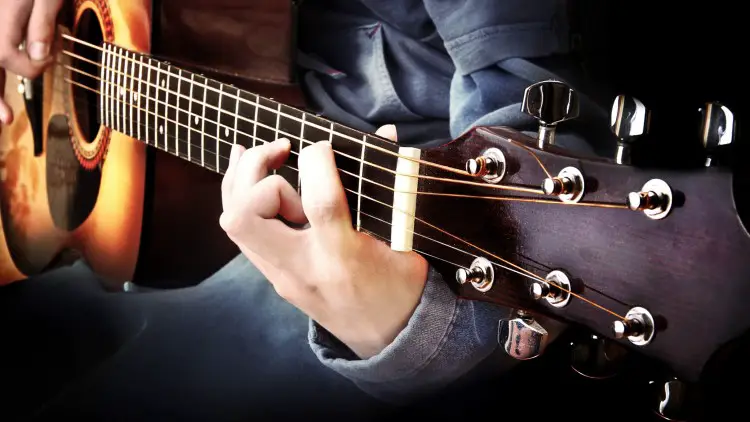
What Is Ragtime Blues Guitar?
Where Did Ragtime Blues Guitar Originate ? The Roots Of Ragtime Blues Fingerstyle Guitar
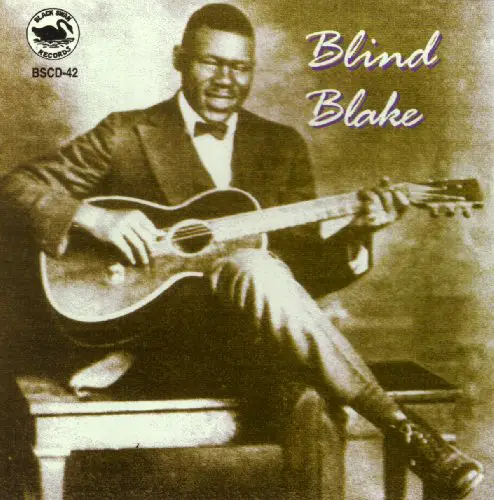
Every one knows the name Scott Joplin, Afro-American born in Texas, America in 1868. For many of us his name is synonymous with ragtime, as a musical genre, and ragtime piano in particular.
If he were alive today, he'd be a wealthy indeed, now that his music is played extensively for film backing tracks and many other purposes ( how can we forget the melody of 'The Entertainer' throughout that great film 'The Sting' with Paul Newman and Robert Redford ?)
Before looking at ragtime blues guitar, we have to explore the origins of ragtime piano .
Scott Joplin - Brothel Musician And Genius
He trained to play piano when he was quite young and left home to earn his living as a musician. For a negro man , this usually meant he had to play in any places that would earn him some money. In the early years, he played in mostly houses of ill-repute and bars.
However, due to his classical musical education, he longed to create his own music and eventually have his music recognised as serious work.
Combining his education in the European classical styles with his own instincts, and evident African ancestry, he developed a style of music that was intricate, but very rhythmic with a complicated beat.
This new rhythm was named 'syncopation' and became ragtime, possibly after a popular dance amongst the negro community in those times, the 'rag'. Thus ragtime piano was born from two cultures.
Ragtime Blues Guitar - The Original Dance Music
At that time, groups of 'minstrel' musicians moved around to entertain in small towns, often performing on banjo and guitar. Although very diverse, the two opposites of blues music can be identified as the dark, emotionally intense blues guitar of the delta, and the happy guitar sound of the Piedmont style.
The Piedmont way of picking was ideal for dancing, had a generally faster rhythm, syncopated tempo and came from the style of playing piano called ragtime.How To Play Ragtime Guitar
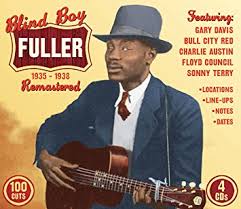 Some early guitarists found that that the thumb might
alternate between 2 of the bass strings, whilst the fingers
pick out the melody - ragtime blues, often called the 'happy blues' was created .
Some early guitarists found that that the thumb might
alternate between 2 of the bass strings, whilst the fingers
pick out the melody - ragtime blues, often called the 'happy blues' was created .
Quite a few guitarists extended this style and were quite successful, notably Blind Blake, Blind Boy Fuller, Blind Willie McTell and several more. Other ragtime guitarists included this style into their repertoire in order to vary their appeal.
For the most part, none of these played to the same skill level as Blake, Reverend Gary Davis and Blind Willie Walker. Guitarists wanting to play blues guitar would be well advised to study these artists extensively learn blues from the great examples left by these masters.
Author: Jim BruceDate: 2015-07-07
Category: Music
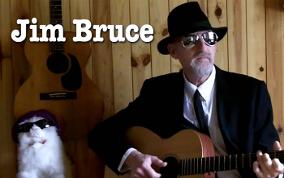
RAGTIME GUITAR - FROM ROOTS TO MODERN
The video clip below features an up to date ragtime tune.
To make it more interesting, the ragtime fingerstyle guitar tabs are displayed in the lower
third of the screen and moves along as the tune changes.
Guitarists may pause the video whenever they want, to read the tablature and get a feel of what's happening in the music. Note how the bass beats double up , jumping from one string to the next within the structure of the alternating picking technique.
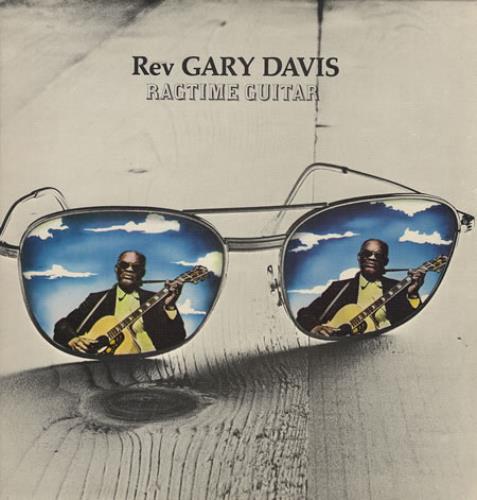
WHAT ARE THE DIFFERENT TYPES OF BLUES GUITAR MUSIC?
Chroniclers think that the very first songs that can really be called blues appeared in the Mississippi Delta in the Deep South of America in the late 1890s.
African slaves would sing or shout so-called 'field hollers', which were often in the call and response format, which helped people to work by providing a strong rhythm.
This type of song was closely connected to the spirituals sang in the Churches during that time and were not often accompanied by any sort of musical instrument.
The early guitars and fiddles were home made and not exactly premium quality. This fact, and the damp climate conditions, were major considerations when creating the first blues songs, and the guitar was often tuned down to open G or D, because it easier to keep in tune.
Before ragtime finger-picking patterns were established, a particular fingerstyle pattern was used called 'monotonic bass' and prevailed throughout most geographical areas. The fingers usually picked the tune on the treble strings, while the thumb struck one or two bass notes to maintain the beat.
The string was damped or muted greatly just after striking, to ensure that it ended up being more of a 'thwack' than a music note. It was a lot like a drum beat and this theory makes a great deal of sense, as drums were illegal for the blacks in the early 1900s.
In the early part of the century piano songs became popular but was clearly restricted for the general public, as pianos are much more costly ( and heavier to transport) than guitars.
A young brothel pianist called Scott Joplin created highly syncopated piano instrumentals, calling the arrangements Ragtime, probably after the type of dancing prominent amongst the Negro communities back then.
A particular feature of ragtime piano music is the 'bum-chick' noise of the left hand bass patterns. Some guitar players saw that this could be approximated with the thumb alternating between the bass strings of a guitar. Fingerstyle ragtime blues, or Piedmont, had arrived.
The very best guitar players took both of these styles and combined them, creating some extremely exciting music. Such players would slip their thumb across the bass strings, but might switch over to monotonic bass when needed to produce the desired musical result.
Several took the style even further and used the thumb to pick any kind of string in all. The thumb is really king when it concerns fingerpicking the blues, whatever pattern is played.
Although classically educated, Scott Joplin was passionate concerning songs that individuals could dance to. He applied the classical music knowledge he had learned from his music training and combined it with honky-tonk barrel house piano - the result was ragtime.
The new blues songs being created by the black community after slavery was shut down in the deep south was slowly changing into a dance form. Musicians often said you had to 'rag the pace a little', or 'dustrag' it.
There was a syncopated dance in vogue among the Negro community called a 'rag'. It's very probable that ragtime music came from these sources. The basics were currently there, and Joplin just added some stop-time syncopation to the music.
A typical piano rag had four parts, which were often extremely different and also increasingly complicated.
It wasn't very long before a young guitar player saw that the left hand part of a piano rag could be played on the guitar. The familiar 'bum-chick' noise of the bass pattern could be made using the thumb to alternative between 2 or 3 bass strings and make a syncopated sound.
Ragtime blues was born and quickly became very intricate and interesting to listen to. It became competitive among musicians to create something better and more syncopated than the other guys, and the competitionmust have been intense.
The king of the ragtime blues fingerstyle genre was a guy called Blind Blake, but there were many others who were really fancy guitarists, such as Blind Boy Fuller, Reverend Gary Davis and the master, Willie Walker.
Throughout the folk blues resurgence in the 60s, young guitar players like Stefan Grossman searched out blues guitar players to learn from, and adapted their fingerstyle patterns right into a modern-day form. A system of notation was developed called guitar tablature, which permitted people to write down the specific locations of the fingers of each hand.
Using guitar tablature considerably accelerated the learning process and it wasn't too long before the best players were transcribing the original Scott Joplin piano songs for guitar - the circle was complete.
Blind Blake - The King Of Ragtime Blues Guitar
Blind Arthur Blake really did not hold this title for nothing. He's usually aregarded as the fastest and most precise jazz blues finger picker there ever was, except possibly for Willie Walker and also Reverend Gary Davis.
Walker only recorded two sides in his career, however those two sides demonstrate awesome knowledge, with lightning quickly picking and flawless timing. Davis picked up techniques from Walker in his early years, undoubtedly grabbing some fantastic tips.
Blake cut more than 120 records during his life time, which was interrupted when he was about 39 years old. His personal life and sudden death are shrouded in secret. Perhaps heavy alcohol consumption took it's toll towards the end of his career.
He arrived in Chicago from the Deep South and brought with him the rapid Geechee guitar playing style learned in his younger days. Blues artists in the city were extremely impressed with the panache of his finger picking - it was blues, yet a delightful picking satyle that made you want to dance.
Blind from birth, his fingers had an almost mythological connection with his guitar, though we don't know just what his style looked like. Unlike numerous blues guitarists, no movie of Blake exists which is a huge pity.
Luckily, some blues men did remember him and described his fingerstyle patterns. The feeling of syncopation in his recordings is absolutely terrific. When I first heard West Coast Blues, his first record, I thought it was surely more than one guitar, yet it was only Blake!
He achieved his sound by applying formidable thumb dexterity and quick finger strokes, creating a complicated mixture of notes that never clashed. He sang as well, yet his voice was hardly appropriate for anything other than playful jazz and hokum songs.
It just didn't have the tone or character to sing delta blues, for instance. His great power was in his fingerstyle, and particularly the way he used his thumb. When playing ragtime, the thumb alternates between two or 3 bass strings, but it could also move over to the treble strings.
Blake would double up on much of his bass thumb strokes, to make sure that, where most guitar players would only play one note, he would play two! This was done by rolling the thumb from one string to the next, rather than using different strikes.
It's a really difficult design to master, not least because the thumb roll injures the thumb. It's required to practice really frequently in order to establish a thick callous at the contact point.
Ragtime (alternately spelled Ragged-time) is an original musical genre which enjoyed its peak popularity between 1897 and 1918.Its main characteristic trait is its syncopated, or "ragged", rhythm. It began as dance music in the red-light districts of American cities such as St. Louis and New Orleans years before being published as popular sheet music for piano. It was a modification of the march made popular by John Philip Sousa, with additional polyrhythms coming from African music.The ragtime composer Scott Joplin became famous through the publication in 1899 of the "Maple Leaf Rag" and a string of ragtime hits that followed, although he was later forgotten by all but a small, dedicated community of ragtime aficionados until the major ragtime revival in the early 1970s. For at least 12 years after its publication, the "Maple Leaf Rag" heavily influenced subsequent ragtime composers with its melody lines, harmonic progressions or metric patterns.Ragtime fell out of favor as Jazz claimed the public's imagination after 1917, but there have been numerous revivals since as the music has been re-discovered. First in the early 1940s many jazz bands began to include ragtime in their repertoire and put out ragtime recordings on 78 RPM records. A more significant revival occurred in the 1950s as a wider variety of ragtime styles of the past were made available on records, and new rags were composed, published, and recorded.In 1971 Joshua Rifkin brought out a compilation of Scott Joplin's work which was nominated for a Grammy Award, and in 1973, the motion picture The Sting brought ragtime to a wide audience with its soundtrack of Joplin tunes. Subsequently the film's rendering of Joplin's 1902 rag "The Entertainer" was a top 40 hit in 1974. Ragtime (with Joplin's work in the forefront) has been cited as an American equivalent of minuets by Mozart, mazurkas by Chopin or Waltzes by Brahms. Ragtime influenced Classical composers including Claude Debussy and Igor Stravinsky.Historical contextRagtime originated in African American music in the late 19th century, descending from the jigs and march music marches played by black bands.By the start of the 20th century it became widely popular throughout North America and was listened and danced to, performed, and written by people of many different subcultures. A distinctly American musical style, ragtime may be considered a synthesis of African syncopation and European classical music, especially the marches made popular by John Philip Sousa.Some early piano rags are entitled marches, and "jig" and "rag" were used interchangeably in the mid-1890s. Ragtime was also preceded by its close relative the cakewalk. In 1895, black entertainer Ernest Hogan published two of the earliest sheet music rags, one of which ("All Coons Look Alike to Me") eventually sold a million copies. As fellow Black musician Tom Fletcher said, Hogan was the "first to put on paper the kind of rhythm that was being played by non-reading musicians." While the song's success helped introduce the country to ragtime rhythms, its use of racial slurs created a number of derogatory imitation tunes, known as "coon songs" because of their use of extremely racist and stereotypical images of blacks. In Hogan's later years he admitted shame and a sense of "race betrayal" for the song while also expressing pride in helping bring ragtime to a larger audience.The emergence of mature ragtime is usually dated to 1897, the year in which several important early rags were published. In 1899, Scott Joplin's "Maple Leaf Rag" was published, which became a great hit and demonstrated more depth and sophistication than earlier ragtime. Ragtime was one of the main influences on the early development of jazz (along with the blues). Some artists, like Jelly Roll Morton, were present and performed both ragtime and jazz styles during the period the two genres overlapped. Jazz largely surpassed ragtime in mainstream popularity in the early 1920s, although ragtime compositions continue to be written up to the present, and periodic revivals of popular interest in ragtime occurred in the 1950s and the 1970s.The heyday of ragtime predated the widespread availability of sound recording. Like classical music, and unlike jazz, classical ragtime was and is primarily a written tradition, being distributed in sheet music rather than through recordings or by imitation of live performances. Ragtime music was also distributed via piano rolls for player pianos. A folk ragtime tradition also existed before and during the period of classical ragtime (a designation largely created by Scott Joplin's publisher John Stillwell Stark), manifesting itself mostly through string bands, banjo and mandolin clubs (which experienced a burst of popularity during the early 20th Century), and the like.A form known as novelty piano (or novelty ragtime) emerged as the traditional rag was fading in popularity. Where traditional ragtime depended on amateur pianists and sheet music sales, the novelty rag took advantage of new advances in piano-roll technology and the phonograph record to permit a more complex, pyrotechnic, performance-oriented style of rag to be heard. Chief among the novelty rag composers is Zez Confrey, whose "Kitten on the Keys" popularized the style in 1921.Ragtime also served as the roots for stride piano, a more improvisational piano style popular in the 1920s and 1930s. Elements of ragtime found their way into much of the American popular music of the early 20th century. It also played a central role in the development of the musical style later referred to as Piedmont blues; indeed, much of the music played by such artists of the genre as Reverend Gary Davis, Blind Boy Fuller, Elizabeth Cotten, and Etta Baker, could be referred to as "ragtime guitar."Although most ragtime was composed for piano, transcriptions for other instruments and ensembles are common, notably including Gunther Schuller's arrangements of Joplin's rags. Ragtime guitar continued to be popular into the 1930s, usually in the form of songs accompanied by skilled guitar work. Numerous records emanated from several labels, performed by Blind Blake, Blind Boy Fuller, Lemon Jefferson, and others. Occasionally ragtime was scored for ensembles, (particularly dance bands and brass bands) similar to those of James Reese Europe, or as songs like those written by Irving Berlin.Joplin had long-standing ambitions for the synthesizing for the worlds of ragtime and opera, to which end the opera Treemonisha was written. However its first performance, poorly staged with Joplin accompanying on the piano, was "disastrous" and it was never to be fully performed again in Joplin's lifetime. In fact the score was lost for decades, then rediscovered in 1970, with a fully orchestrated and staged performance in 1972. An earlier opera by Joplin, A Guest of Honor, has been lost.Musical formThe rag was a modification of the march made popular by John Philip Sousa, with additional polyrhythms coming from African music. It was usually written in 2/4 or 4/4 time with a predominant left hand pattern of bass notes on odd-numbered beats and chords on even-numbered beats accompanying a syncopated melody in the right hand, as demonstrated in Paul O'Donnell's 1932 recording, "Bass in the Left". In fact the name "ragtime" comes from the "ragged or syncopated rhythm" of the right hand. A rag written in 3/4 time is a "ragtime waltz".Ragtime is not a "time" (meter) in the same sense that march time is 2/4 meter and waltz time is 3/4 meter; it is rather a musical genre that uses an effect that can be applied to any meter. The defining characteristic of ragtime music is a specific type of syncopation in which melodic accents occur between metrical beats. This results in a melody that seems to be avoiding some metrical beats of the accompaniment by emphasizing notes that either anticipate or follow the beat.The ultimate (and intended) effect on the listener is actually to accentuate the beat, thereby inducing the listener to move to the music. Scott Joplin, the composer/pianist known as the "King of Ragtime", called the effect "weird and intoxicating." He also used the term "swing" in describing how to play ragtime music: "Play slowly until you catch the swing...". The name swing later came to be applied to an early genre of jazz that developed from ragtime. Converting a non-ragtime piece of music into ragtime by changing the time values of melody notes is known as "ragging" the piece.Original ragtime pieces usually contain several distinct themes, four being the most common number. These themes were typically 16-bars, each theme divided into periods of four four-bar phrases and arranged in patterns of repeats and reprises. Typical patterns were AABBACCC′, AABBCCDD and AABBCCA, with the first two strains in the tonic key and the following strains in the subdominant. Sometimes rags would include introductions of four bars or bridges, between themes, of anywhere between four and 24 bars.Styles of ragtimeRagtime pieces came in a number of different styles during the years of its popularity and appeared under a number of different descriptive names. It is related to several earlier styles of music, has close ties with later styles of music, and was associated with a few musical "fads" of the period such as the foxtrot. Many of the terms associated with ragtime have inexact definitions, and are defined differently by different experts; the definitions are muddled further by the fact that publishers often labelled pieces for the fad of the moment rather than the true style of the composition.There is even disagreement about the term "ragtime" itself; experts such as David Jasen and Trebor Tichenor choose to exclude ragtime songs from the definition but include novelty piano and stride piano (a modern perspective), while Edward A. Berlin includes ragtime songs and excludes the later styles (which is closer to how ragtime was viewed originally). The terms below should not be considered exact, but merely an attempt to pin down the general meaning of the concept.
- Cakewalk - A pre-ragtime dance form popular until about 1904. The music is intended to be representative of an African-American dance contest in which the prize is a cake. Many early rags are cakewalks.
- Characteristic march - A march incorporating idiomatic touches (such as syncopation) supposedly characteristic of the race of their subject, which is usually African-Americans. Many early rags are characteristic marches.
- Two-step - A pre-ragtime dance form popular until about 1911. A large number of rags are two-steps.
- Slow drag - Another dance form associated with early ragtime. A modest number of rags are slow drags.
- Coon song - A pre-ragtime vocal form popular until about 1901. A song with crude, racist lyrics often sung by white performers in blackface. Gradually died out in favor of the ragtime song. Strongly associated with ragtime in its day, it is one of the things that gave ragtime a bad name.
- Ragtime song - The vocal form of ragtime, more generic in theme than the coon song. Though this was the form of music most commonly considered "ragtime" in its day, many people today prefer to put it in the "popular music" category. Irving Berlin was the most commercially successful composer of ragtime songs, and his "Alexander's Ragtime Band" (1911) was the single most widely performed and recorded piece of this sort, even though it contains virtually no ragtime syncopation. Gene Greene was a famous singer in this style.
- Folk ragtime - A name often used to describe ragtime that originated from small towns or assembled from folk strains, or at least sounded as if they did. Folk rags often have unusual chromatic features typical of composers with non-standard training.
- Classic rag - A name used to describe the Missouri-style ragtime popularized by Scott Joplin, James Scott, and others.
- Fox-trot - A dance fad which began in 1913. Fox-trots contain a dotted-note rhythm different from that of ragtime, but which nonetheless was incorporated into many late rags.
- Novelty piano - A piano composition emphasizing speed and complexity which emerged after World War I. It is almost exclusively the domain of white composers.
Stride piano - A style of piano which emerged after World War I, developed by and dominated by black East coast pianists (James P. Johnson, Fats Waller and Willie 'The Lion' Smith). Together with novelty piano, it may be considered a successor to ragtime, but is not considered by all to be "genuine" ragtime. Johnson composed the song that is arguably most associated with the Roaring Twenties, "Charleston." A recording of Johnson playing the song appears on the compact disc, James P. Johnson: Harlem Stride Piano (Jazz Archives No. 111, EPM, Paris, 1997).Ragtime revivalsIn the early 1940s many jazz bands began to include ragtime in their repertoire, and as early as 1936 78 RPM records of Joplin's compositions were produced. Old numbers written for piano were rescored for jazz instruments by jazz musicians, which gave the old style a new sound. The most famous recording of this period is Pee Wee Hunt's version of Euday L. Bowman's "Twelfth Street Rag".A more significant revival occurred in the 1950s. A wider variety of ragtime styles of the past were made available on records, and new rags were composed, published, and recorded. Much of the ragtime recorded in this period is presented in a light-hearted novelty style, looked to with nostalgia as the product of a supposedly more innocent time. A number of popular recordings featured "prepared pianos," playing rags on pianos with tacks on the hammers and the instrument deliberately somewhat out of tune, supposedly to simulate the sound of a piano in an old honky tonk.Three events brought forward a different kind of ragtime revival in the 1970s. First, pianist Joshua Rifkin brought out a compilation of Scott Joplin's work on Nonesuch Records, which was nominated for a Grammy in the "Best Classical Performance - Instrumental Soloist(s) without Orchestra" category in 1971. This recording reintroduced Joplin's music to the public in the manner the composer had intended, not as a nostalgic stereotype but as serious, respectable music.Second, the New York Public Library released a two-volume set of "The Collected Works of Scott Joplin," which renewed interest in Joplin among musicians and prompted new stagings of Joplin's opera Treemonisha Finally, with the release of the motion picture The Sting in 1973, which had a Marvin Hamlisch soundtrack of Joplin tunes, ragtime was brought to a wide audience. Hamlisch's rendering of Joplin's 1902 rag "The Entertainer" won an Academy Award, and was an American Top 40 hit in 1974, reaching #3 on 18 May.In 1998, an adaption of E.L. Doctorow's historic novel, Ragtime was produced on Broadway. With music by Stephen Flaherty and lyrics by Lynn Ahrens, the show featured several rags as well as songs in other musical genres. In modern times, younger musicians have again begun to find ragtime, and incorporate it into their musical repertoires. Such acts include The Kitchen Syncopators, Inkwell Rhythm Makers, Curtains for you, The Gallus Brothers and the not-quite as young Baby Gramps.
Ragtime Guitar Songs - Famous Ragtime Guitarists
A
- Pink Anderson - (February 12, 1900 – October 12, 1974) Born in Spartanburg, South Carolina, Anderson was an early country blues guitarist and singer who performed Piedmont blues. Many of his recordings have been released by Prestige Records.
- Etta Baker - (March 31, 1913 – September 23, 2006) Born in Caldwell County, North Carolina, Baker a country blues guitarist, banjo player and singer who performed Piedmont blues. In the 1990s she released two solo albums, one for Rounder Records. In 2004 Music Maker Records released some recording she did with Taj Mahal in 1956 and 1998.
- Scrapper Blackwell - (February 21, 1903 – October 27, 1962) Born in Syracuse, North Carolina as Francis Hillman Blackwell, Scrapper Blackwell performed acoustic Piedmont blues and an early exponent of Chicago blues who worked closely with pianist Leroy Carr. He also backed singer Black Bottom McPhail. Document Records has issued most of his work in three volumes.
- Blind Blake - (c. 1895 – 1937) Born in Jacksonville, Florida, guitarist and singer Blind Blake played almost every form of music imaginable. He performed early ragtime on guitar, Piedmont blues, country blues, Delta blues and Chicago blues. A musician of great importance, he recorded frequently for Paramount Records.
- John Cephas - Born September 4, 1930 in Washington, D.C. but raised in Bowling Green, Virginia, contemporary blues musician Cephas plays country blues guitar, harmonica and sings, performing in the Piedmont blues vein. He has recorded a number of albums to date, notably for the Alligator Records label.
- Jaybird Coleman - (May 20, 1896 – January 28, 1950) Born in Gainesville, Alabama, Coleman was a country blues harmonica player, guitarist and singer who performed early Piedmont blues and harmonica blues active most in the 1930s. His career fizzled out and he was left to perform as a street act in Alabama. Document Records has issued a compilation of all of his recordings.
- Reverend Gary Davis
- Blind Boy Fuller
- Frank Hovington
- Peg Leg Howell - (March 5, 1888 – August 11, 1968) Born in Eatonton, Georgia as Joshua Barnes Howell, Howell was an amputee missing one leg who taught himself to play guitar and sing. He performed acoustic country blues in the Piedmont blues style, spending most of his career in Atlanta, Georgia. From 1926 or so until 1929 he recorded for Columbia Records, then fell off into obscurity shortly after (eventually losing his other leg to diabetes).
- Bo Weavil Jackson
- John Jackson (blues musician)
- Lonnie Johnson
- Luke Jordan - (January 28, 1892 – June 25, 1952) Born in Bluefield, West Virginia, Jordan was a country blues guitarist of the Piedmont blues and East Coast blues variety who spent most of his career in Lynchburg, Virginia. Though not many recordings survive of his, Jordan was undeniably a major early influence on musicians in the Piedmont style.
- Charley Lincoln - March 11, 1900 – September 28, 1963 Born in Lithonia, Georgia, Lincoln was an acoustic country and Piedmont blues guitarist and vocalist. He was the brother of Barbecue Bob, with whom he performed from the 1920s on into the 1950s. He made several recording, some for Columbia Records.
- Carl Martin
- Sara Martin
- Brownie McGhee
- Buddy Moss
- Blind Willie McTell
- Yank Rachell
- Bumble Bee Slim
- Joseph Spence
- Baby Tate
- Sonny Terry
- Curley Weaver
- Josh White
- Phil Wiggins
- Allmusic




